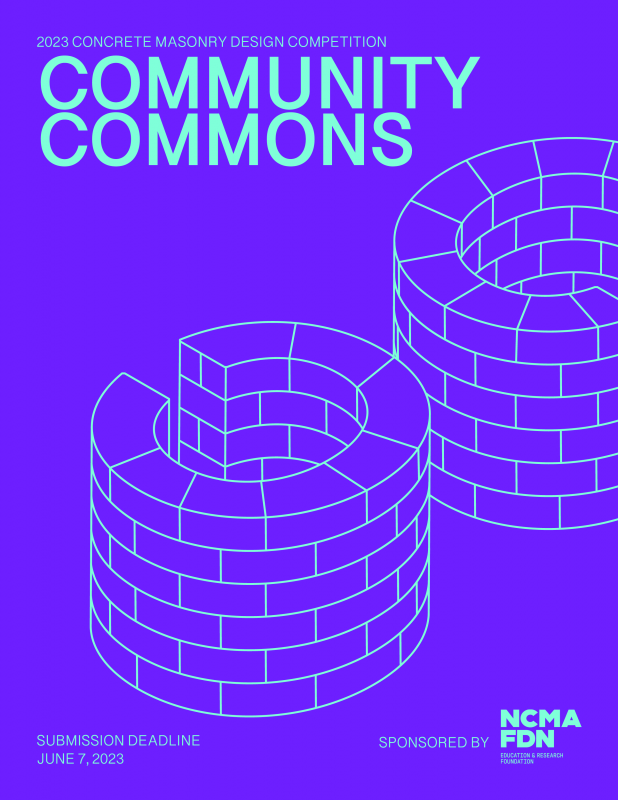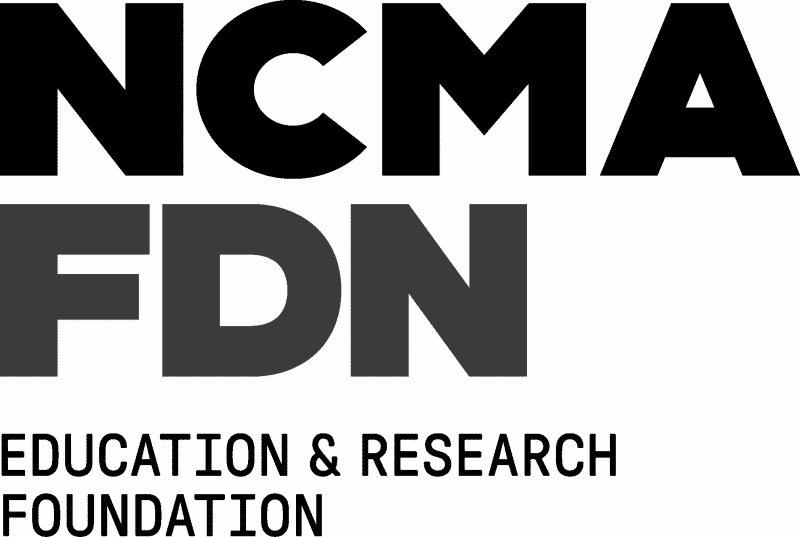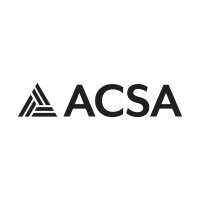Submission Deadline: June 7, 2023
2023 Concrete Masonry Competition
Community Commons
Program
Community Commons
The challenges of the past few years have demonstrated the need for places for individuals in communities gather. The goal of this competition is to create a functional space within a community for gathering, play and shelter. A multi-functional building that can be used in a variety of ways is the overall goal. Think about how communities will gather in the future and design a building to meet these needs. Concrete masonry is an ideal choice for this type of building. It is durable and long-lasting, providing a pleasing aesthetic, and can be used for security and safety. Designs should identify multiple ways to take advantage of concrete masonry’s benefits to meet the needs of this new community center.
The design competition asks students to use concrete masonry products as the primary material in the design of a state-of-the-art Community Commons. This community center, both indoor and outdoor gathering spaces can be used for education, recreation, networking events and more. The Community Commons must be able to be used as a community storm shelter in case of extreme events such as tornadoes, hurricanes, or other natural disasters. Concrete masonry is a flexible, resilient and durable material, and provides vast opportunities for form, function and expression.
Program
Overall programming of this building is up to the student and/or faculty sponsor. It should include a variety of spaces for different types of community activities. Consider the life cycle of the building and the different types of individuals who would use the community center over time. Students should also consider sustainability and reducing environmental impacts in their design.
A key required component is consideration for a natural or man-made disaster and a way for the building to support community members. Again, it is up to the student/faculty sponsor to identify the disaster and how the building will support the communities. Ideas include a community storm shelter in the event of tornadoes or an area of disaster response/support/temporary lodging after an earthquake.
The following additional parameters are also included:
- Overall interior and exterior square footage of 12,500 to 25,000 square feet.
- Must contain at least one large interior space (approximately 5,000 square feet) and one large exterior space (approximately 5,000 square feet).
- Contain a variety of meeting spaces and functional areas:
- Multi-purpose rooms
- Physical fitness spaces
- Administrative offices
- Common areas
- Classrooms
- Commercial kitchen
- Restrooms/changing rooms
- Buildings can be single or multi-story.
- Must be ADA compliant.
- The community center must also include outdoor spaces for gathering and activity.
- The area used for shelter from disaster must comply with relevant FEMA, FERP, and/or International Building Code requirements for that use and disaster.
Site
The site for the competition is the choice of the student and/or faculty sponsor. However, the site should be accessible to a medium-to-large size community and provide access to multiple modes of transportation such as public transportation, biking, and/or walking. Submissions will be required to explain the site selection, strategy, and access graphically or otherwise.
CONSTRUCTION TYPE
CONSTRUCTION TYPE
The primary structural system must be concrete masonry. This can be single-wythe concrete masonry or multi-wythe, with the backup being CMU. Participants are encouraged to consider innovative ways to use concrete masonry products in interior, exterior, and landscape applications. Outdoor spaces can include concrete masonry (such as screen or privacy walls) as well as other dry-cast concrete products, such as concrete pavers and segmental retaining wall units.
Concrete Masonry Units (CMU)
CMU are manufactured using dry-cast concrete on high-speed manufacturing equipment. Dry-cast concrete differs from other types of concrete in that it is initially mixed to a very stiff consistency. This consistency facilitates production through manufacturing equipment. This equipment utilizes compaction and vibration to form the units, and a curing process to accelerate hardening.
There are several American Society for Testing and Materials (ASTM) specifications that cover concrete masonry products. The primary one is ASTM C90, Standard Specification for Loadbearing Concrete Masonry Units.
Additional Concrete Products
The manufacturing process for CMU is also used to make a variety of other types of products, including segmental retaining wall (SRW) and concrete paving units. These are primarily used in hardscape applications (residentially, commercially, and more).
CRITERIA FOR JUDGING
Submissions must clearly address the specific issues of the design challenge, submissions must clearly demonstrate the design solution’s response to the following requirements:
- A clear understanding of concrete masonry units–deployed with maximum innovative potential
- A strong conceptual strategy translated into a coherent integrated design proposal
- An articulate mastery of formal concepts and aesthetic values
- A compelling response to the physical and cultural context of the scheme
- A mature awareness of and an innovative approach to sustainability as a convergence of social, economic, and environmental issues
- A thorough appreciation of human needs and social responsibilities
Competition Organizers & Sponsors
Questions
Edwin Hernández
Programs Coordinator
ehernandez@acsa-arch.org
202.785.2324
Eric W. Ellis
Senior Director of Operations and Programs
202-785-2324
eellis@acsa-arch.org

 Study Architecture
Study Architecture  ProPEL
ProPEL 


